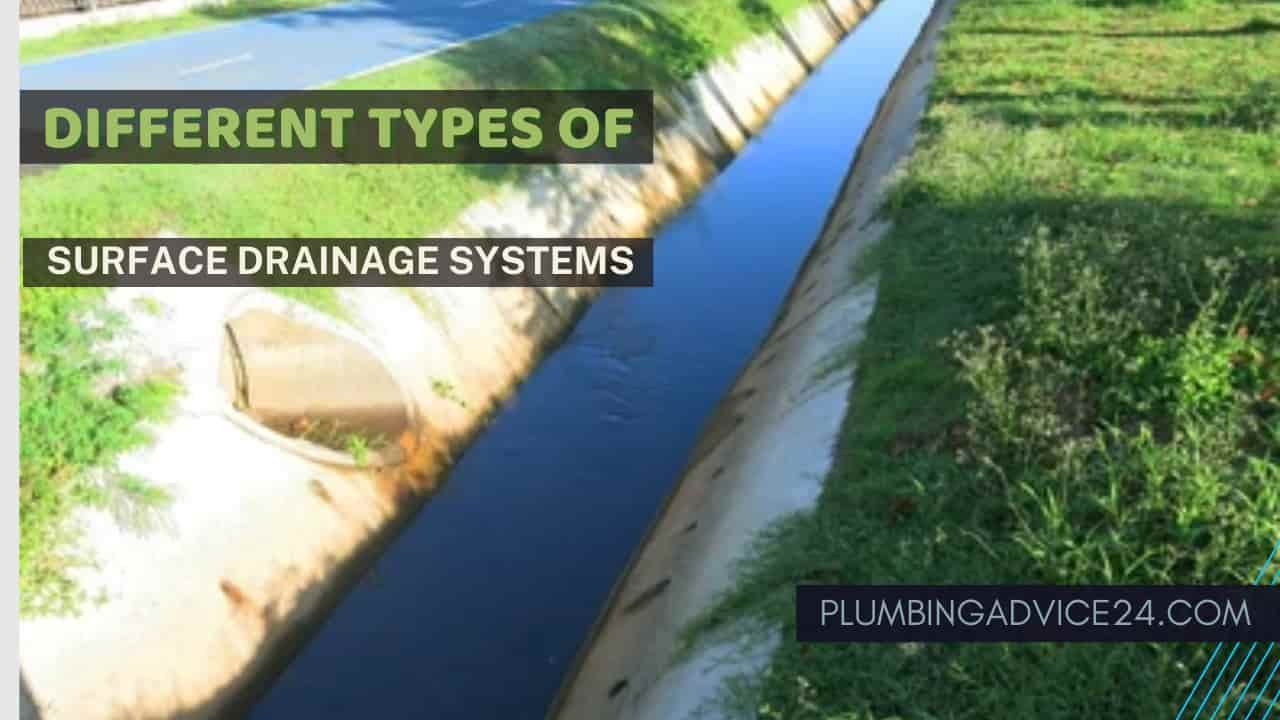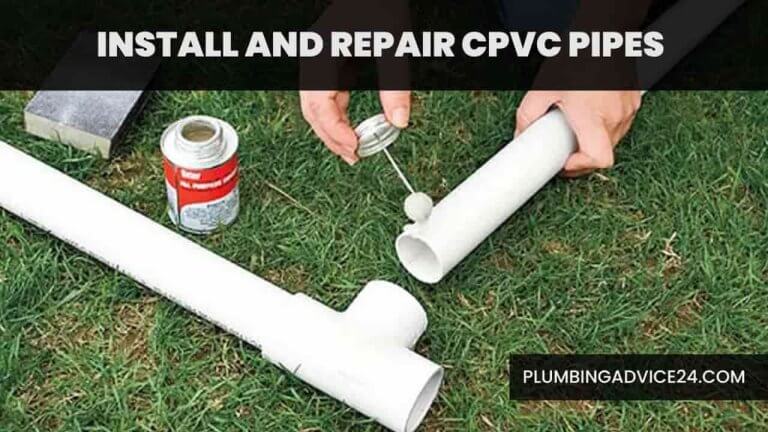Different Types of Surface Drainage Systems
The main purpose of surface drainage is to prevent water from flooding or accumulating on the property. Surface drainage carries rainwater, and your drain water away from the house into streams and rivers. You need to know which type of surface drainage is best for you. This article provides information on the types of surface drainage systems that will help you choose the right surface drainage for your drainage purpose.
Types of Surface Drainage Systems
Surface drainage is prepared by making shallow ditches in a parallel pattern. The land is properly sloped so that rainwater can drain into streams and rivers. There are four main types of surface drainage systems, which are as follows:
- Open Drainage Systems
- Humps and Hollows Drainage
- Levees Drainage System
- Grassed Waterways
Open Drainage Systems
Open drainage systems are designed to accommodate heavy flows of runoff. It consists of open channels or ditches. These types of surface drainage systems can handle both rainwater and wastewater but should not be used to transport wastewater. Open drainage systems are ideal for rainwater drainage. It is also called natural drainage system.
Open drainage systems divert rainwater to rivers or other water sources. These drainage systems serve a good purpose in preventing flooding, but when they lack cover, solid and domestic waste accumulates in them and can lead to blockages. As a result, they can become dangerous for people living in the surrounding area.
Open drains may be covered by concrete slabs to avoid obstruction and unauthorized disposal of waste or sewage. However, where no wastewater infrastructure exists, disposal of waste and gray water into such systems may be a temporary solution. Before discharging waste- or greywater into open drains, proper disposal and possibly treatment of wastewater should be considered.
There are three types of open drainage systems, which are as follows:
- Shallow Drainage System
- Medium Depth Drainage System
- Large Drainage System
Shallow Drainage Systems
A shallow open drain system can also be easily created using a hand shovel and is rarely more than a foot deep. Their main purpose is to help remove excess water in shallow depressions and divert it to larger drains or streams. While they are meant to direct water into large streams or drains, shallow open drains can only drain small areas and are a temporary solution.
Medium Depth Drainage Systems
Medium-depth open drains are usually one foot to one meter deep and are constructed using the excavator. It is usually made of a V-shaped ditch with a flat bottom and sloped in the direction towards which the flow is to be carried. Slopes are essential in these drains, as this slope helps to allow water to flow quickly without damaging the walls or bottom of the drain. This type of drainage system is best for flat areas.
Large Drainage Systems
Large open drains can be several meters deep and wide. Dragline excavators, bulldozers, or scrapers are used to create this type of open drain. It is used to remove large amounts of water.
Humps and Hollows Drainage
Humps and hollows drainage involves reshaping the surface to form parallel ridges with equal side slopes. The humped shape sheds more moisture relatively quickly, while the hollow acts as a shallow surface drain. These types of surface drainage systems are ideal for drainage peat soils and high rainfall areas, allowing for rapid drainage and lowering the water level.
Humps and hollow drainage systems consist of lateral surface drains that discharge into headland drains, which in turn discharge through short open drains or shallow pipes into natural watercourses or open drains.
Related Post : Types of Drainage Systems for Residential
Levees Drainage System
A levees drainage system is created by removing soil on the downslope of surface channels. Its primary function is to reduce the risk of flooding in areas near water. This is typical for preventing rapid onset floods such as river floods, although flood levels can also be found near the sea. Levee ridges rise above the channel or flood plains they protect.
In general, levees prevent water from flooding the ground only to a certain extent. However, if unprecedented water levels occur, the levees may break or prove too low, causing the area to flood.
Grassed Waterways
Grassed waterways are wide and shallow channels designed to carry water down a hill to prevent erosion. These types of surface drainage systems are created by sowing grass. The grass is planted in natural depressions where water flows. Plants growing in these contour channels help slow water flow, and plant roots help hold the soil in place.
They can either prevent erosion before it occurs or repairs minor erosion that has already started. A necessary prerequisite for such a waterway is a dense expanse of grass. The slope affects both the size and shape of the waterway, as well as the amount of water to discharge.
Related Post : 15 Different Types of Plumbing Traps
What Are the Different Types of Surface Drainage Systems?
Surface drainage is prepared by making shallow ditches in a parallel pattern. The land is properly sloped so that rainwater can drain into streams and rivers. There are four main types of surface drainage Open Drainage Systems, Humps and Hollows Drainage, Levees Drainage Systems, and Grassed Waterways.
How Does a Surface Drainage System Work?
Surface drainage is prepared by creating shallow ditches in a parallel pattern. The land is properly sloped, so that rainwater can drain into streams and rivers.
What Is Open Drainage?
Open drainage systems are designed to accommodate heavy flows of runoff. It consists of open channels or ditches. Open drainage systems can handle both rainwater and wastewater but should not be used to transport wastewater. It is also called natural drainage system.
Types of Open Drainage System
There are three types of open drainage systems:
- Shallow Drainage System
- Medium Depth Drainage System
- Large Drainage System.
What Problems Can Open Drains Cause?
Open drainage systems serve a good purpose in preventing flooding, but when they lack cover, solid and domestic waste accumulates in them and can lead to blockages. As a result, they can become dangerous for people living in the surrounding area.
What Is Grassed Waterways?
Grassed waterways are wide and shallow channels designed to carry water down a hill to prevent erosion. These types of surface drainage systems are created by sowing grass. The grass is planted in natural depressions where water flows. Plants growing in these contour channels help slow water flow, and plant roots help hold the soil in place.
Best Grass for Waterways
Grass waterways are necessary to prevent erosion from surface runoff and reduce gully erosion. For grassed waterways, you need to be careful that the grass you choose will survive and prevent soil erosion by water. To ensure adequate plant growth during periods of hot and dry conditions, consider grasses with high drought tolerance, such as tall fescue and simple bromegrass. Annual ryegrass is also a good choice that you can use.
If You Liked This Post? So Share It with Your Friends
Suggested Articles:











